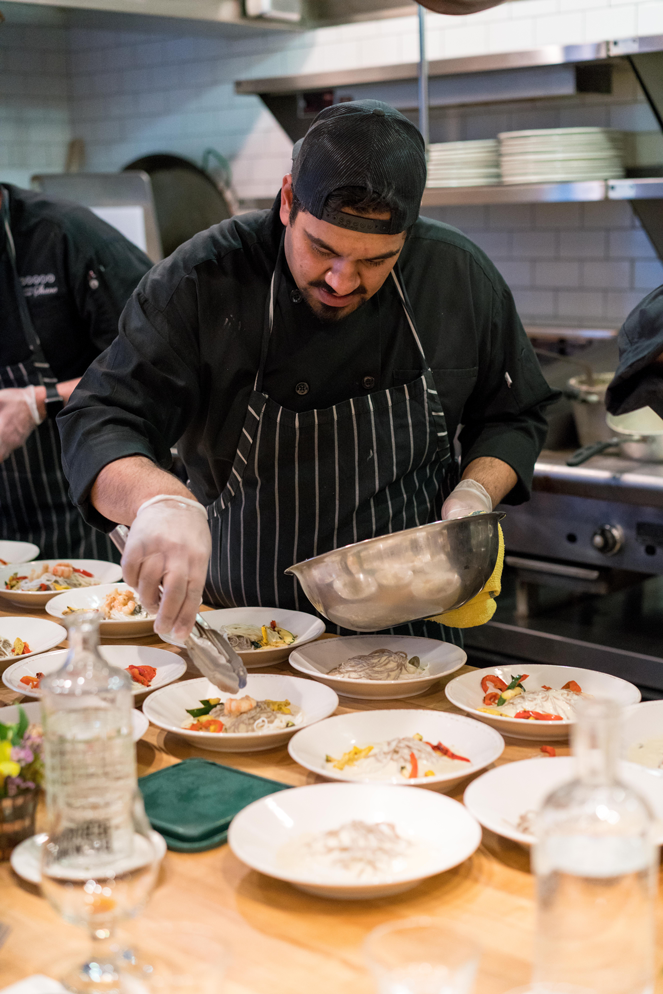3 Simple Ways Restaurants Can Reduce Food Waste this Holiday Season
The season of giving thanks and celebrating with friends, family and colleagues is upon us. And, with it, comes a rise in reservations for holiday parties, special family outings and overall overindulgence. The holiday season can be a boon for many restaurants, but it can also exacerbate an issue that plagues the restaurant industry all year long: food waste. Before the holiday rush overwhelms our schedules and our senses, let’s take a moment to reflect on the issue of food waste and some simple ways that restaurants can reduce food waste this holiday season.

The Issue of Food Waste in the Restaurant Industry
Food waste in the restaurant industry is real. Let’s take a peep at the numbers.
According to the Restaurant Food Waste Action Guide (pdf), the restaurant industry alone generates about 11.4 million tons of food waste annually. The Restaurant Food Wast Action Guide was published by ReFED, a U.S.-based collaborative consisting of over 50 private, nonprofit, and public-sector leaders committed to reducing food waste. The guide serves as a resource for restaurant sustainability directors, owners and other leaders in the industry who are developing and implementing food waste reduction strategies.
Not only is food waste a serious humanitarian issue, it’s also a business issue that has a huge effect on restaurant food costs,
The aforementioned 11.4 million tons of food waste equates to $25 billion worth of food! (Yes, billion with a “b”.) Given that there are approximately 1 million restaurants in the U.S., that means that the average restaurant wastes $25,000 of food each year. ?
A lot of different factors affect how much money a restaurant actually throws away due to food waste. But, no matter how you slice it, it’s an incredible amount of food and dollars being wasted.
Simple Ways Restaurants Can Reduce Food Waste
Below are some simple ways that restaurants can reduce food waste this holiday season…and throughout the year.
1. Order to Par Based on Projections
Over-ordering, particularly over-ordering perishable items, often leads to food waste. Knowing what quantity and when to order in order to not over-order requires inventory management of the highest order. 🙂 To do so, you need to know your par levels, or how much of a given ingredient to have on hand at any given time. Setting appropriate par levels can be challenging in any period…let alone during the potential peaks and valleys of the holidays. Having sales and purchase history at your fingertips to compare with the ghosts of your inventory’s past certainly helps.
Like any time of year, best practice for the holidays is to project your sales forecast based on what you’ve been doing and what you’ve done in the same period in previous years. Based on your projections and any seasonal recipe considerations, you should be able to anticipate what you’ll need on hand.
Restaurant budgeting software here also helps. With xtraCHEF’s Budget Management module, you can set your target cost of goods sold (COGS) for the holiday months and use the declining budget feature to track your spend relative to sales goals in real-time. Our restaurant inventory management software is also closely connected to our purchasing and order management software making it easy to order to projected par requirements during the holidays.
2. Monitor & Maximize Yields
Every ingredient in your pantry or product catalogue has an associated yield, or how much of the purchased product you expect to be able to use. In order to accurately calculate recipe costs, you need to know what your yield is for every ingredient in every recipe. What this means in the context of food waste is that “how you slice it” actually does make a big difference.
In order to minimize food costs and maximize yields, you must properly train staff involved in food prep to process the ingredients to make the most of them according to your standards. You can also get creative in how you use your trimmings, for example, using vegetable trimmings or fish bones in stock.
Trimmings in the kitchen are part of doing business. If you can’t use those trimmings, there are creative options to minimize their impact on the environment and the dumpster. According to Ecocycle, one of the largest non-profit recyclers in the US, less than 15% of restaurant food waste is collected for composting. The Boulder-based firm recently released a special report offering restaurant operators insights and advice on how they can reduce waste through composting.
The report does not just focus on food waste in the back-of-house, because food scraps are not only produced in the kitchen. The company helps restaurants to implement front-of-house composting and recycling programs as well. Sometimes, a simple audit of back-of-house processes or a sustainability audit of the front-of-house can reveal opportunities to not only reduce food waste, but also lower food costs.

3. Donate Leftover Food
Food insecurity remains a major issue in communities across the United States. According to the U.S. Department of Agriculture (USDA), 1 in 9 Americans are food insecure. This means that they lack consistent access to enough food for an active, healthy life.
Fortunately, there are many national and local programs that are looking to address this issue. At the most recent TechTable event hosted in New York City, we heard from Jasmine Crowe, Founder and CEO of Goodr, on how restaurants can not only donate surplus food that would typically end up in a dumpster but can unlock significant tax deductions at the same time. Goodr, the only IRS-compliant food waste management company, uses a blockchain-enabled ledger to track an organization’s surplus food waste from pickup to donation.
Aside form Goodr, there are countless local non-profits who either accept or redistribute food donations to the those that are food insecure or hungry. It’s hard to argue that any good food that ends up in a hungry belly is better off than in a garbage truck.
Cheers to Reducing Food Waste
As we gather this holiday season to break bread, let’s be sure to remember that hunger and food waste is a challenge that remains in the United States and around the world. Let’s also not forget that the restaurant industry is in a unique position to address this challenge.
And, xtraCHEF is here to help.



